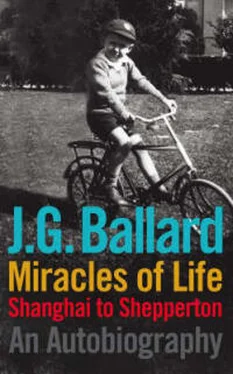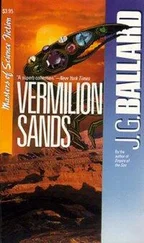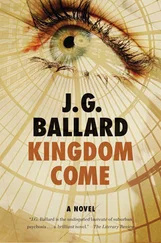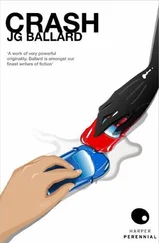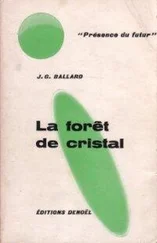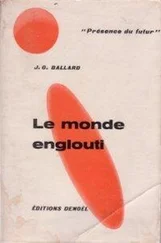And we rather liked it that way. Our willing complicity in this blurring of truth and reality in the Mondo Cane films alone made them possible, and was taken up by the entire media landscape, by politicians and churchmen. Celebrity was all that counted. If denying God made a bishop famous, what choice was there? We liked mood music, promises that were never kept, slogans that were meaningless. Our darkest fantasies were pushing at a half-open bathroom door as Marilyn Monroe lay drugged among the fading bubbles.
All this I tried to grapple with in The Atrocity Exhibition . What if the everyday environment was itself a huge mental breakdown: how could we know if we were sane or psychotic? Were there any rituals we could perform, deranged sacraments assembled from a kit of desperate fears and phobias, that would conjure up a more meaningful world?
Writing The Atrocity Exhibition , I adopted an approach as fragmented as the world it described. Most readers found it difficult to grasp, expecting a conventional A+B+C narrative, and were put off by the isolated paragraphs and the rather obsessive sexual fantasies about the prominent figures of the day. But the book has remained in print in Britain, Europe and the USA, and has been reissued many times.
In New York it was published by Doubleday, but the editor, an enthusiastic supporter, made the mistake of adding an advance copy to the trolley filled with new titles that was sent up to the president’s office. There Nelson Doubleday broke the cardinal rule of all American publishers: never read one of your own books. He leafed idly through The Atrocity Exhibition and his eye lit upon a piece entitled ‘Why I Want to Fuck Ronald Reagan’. The then governor of California was a close friend, and within minutes the order had gone out to pulp the entire edition. The book was later published by Grove Press, home to William Burroughs and other prominent avant-garde writers, and since the 1990s by the very lively and adventurous Re/Search firm in San Francisco, one of the most remarkable publishing houses I have come across, specialists in urban anthropology of the most bizarre kind.
In the last few years The Atrocity Exhibition seems to be emerging from the dark, and I wonder if the widespread use of the internet has made my experimental novel a great deal more accessible. The short paragraphs and discontinuities of the morning’s emails, the overlapping texts and the need to switch one’s focus between unrelated topics, together create a fragmentary world very like the text of The Atrocity Exhibition .
* * *
By the time that The Atrocity Exhibition was published in 1970 I was already looking ahead to what would be my first ‘conventional’ novel for five years. I thought hard about the cluster of ideas that later made up Crash , many of them explored in The Atrocity Exhibition , where to some extent they were disguised within the fragmentary narrative. Crash would be a head-on charge into the arena, an open attack on all the conventional assumptions about our dislike of violence in general and sexual violence in particular. Human beings, I was sure, had far darker imaginations than we liked to believe. We were ruled by reason and self-interest, but only when it suited us to be rational, and much of the time we chose to be entertained by films, novels and comic strips that deployed horrific levels of cruelty and violence.
In Crash I would openly propose a strong connection between sexuality and the car crash, a fusion largely driven by the cult of celebrity. It seemed obvious that the deaths of famous people in car crashes resonated far more deeply than their deaths in plane crashes or hotel fires, as one could see from Kennedy’s death in his Dallas motorcade (a special kind of car crash), to the grim and ghastly death of Princess Diana in the Paris underpass.
Crash would clearly be a challenge, and I was still not completely convinced by my deviant thesis. Then in 1970 someone at the New Arts Laboratory in London contacted me and asked if there was anything I would like to do there. The large building, a disused pharmaceutical warehouse, contained a theatre, a cinema and an art gallery (there were also a number of flues, intended to draw off any dangerous chemical fumes and useful, so I was told, for venting away any cannabis smoke in the event of a police raid.
It occurred to me that I could test my hypothesis about the unconscious links between sex and the car crash by putting on an exhibition of crashed cars. The Arts Lab were keen to help, and offered me the gallery for a month. I drove around various wrecked-car sites in north London, and paid for three cars, including a crashed Pontiac, to be delivered to the gallery.
The cars went on show without any supporting graphic material, as if they were large pieces of sculpture. A TV enthusiast at the Arts Lab offered to set up a camera and closed-circuit monitors on which the guests could watch themselves as they strolled around the crashed cars. I agreed, and suggested that we hire a young woman to interview the guests about their reactions. Contacted by telephone, she agreed to appear naked, but when she walked into the gallery and saw the crashed cars she told me that she would only perform topless, a significant response in its own right, I felt at the time.
I ordered a fair quantity of alcohol, and treated the first night like any gallery opening, having invited a cross section of writers and journalists. I have never seen the guests at an art gallery get drunk so quickly. There was a huge tension in the air, as if everyone felt threatened by some inner alarm that had started to ring. No one would have noticed the cars if they had been parked in the street outside, but under the unvarying gallery lights these damaged vehicles seemed to provoke and disturb. Wine was splashed over the cars, windows were broken, and the topless girl was almost raped in the back seat of the Pontiac (or so she claimed: she later wrote a damning review headed ‘Ballard Crashes’ in the underground paper Friendz ). A woman journalist from New Society began to interview me among the mayhem, but became so overwrought with indignation, of which the journal had an unlimited supply, that she had to be restrained from attacking me.
During the month they were on show the cars were ceaselessly attacked, daubed with white paint by a Hare Krishna group, overturned and stripped of wing mirrors and licence plates. By the time the show closed and the cars were towed away, unmourned the moment they were dragged through the gallery doors, I had long since made up my mind. All my suspicions had been confirmed about the unconscious links that my novel would explore. My exhibition had in fact been a psychological test disguised as an art show, which is probably true of Hirst’s shark and Emin’s bed. I suspect that it’s no longer possible to stir or outrage spectators by aesthetic means alone, as did the Impressionists and cubists. A psychological challenge is needed that threatens one of our dearer delusions, whether a stained sheet or a bisected cow forced to endure a second death in order to remind us of the illusions to which we cling about the first.
In 1970, encouraged by my crashed cars exhibition, I began to write Crash . This was more than a literary challenge, not least because I had three young children crossing the streets of Shepperton every day, and nature might have played another of its nasty tricks. I have described the novel as a kind of psychopathic hymn, and it took an immense effort of will to enter the minds of the central characters. In an attempt to be faithful to my own imagination, I gave the narrator my own name, accepting all that this entailed.
Читать дальше
